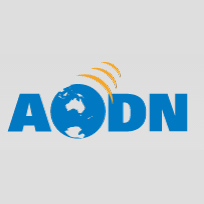Full description
Shedding light on the distribution and ecosystem function of mesopelagic communities in the twilight zone (~200–1000 m depth) of global oceans can bridge the gap in estimates of species biomass, trophic linkages, and carbon sequestration role. Ocean basin-scale bioacoustic data from ships of opportunity programs are increasingly improving this situation by providing spatio-temporal calibrated acoustic snapshots of mesopelagic communities that can mutually complement established global ecosystem, carbon, and biogeochemical models. This data descriptor provides an overview of such bioacoustic data from Australia’s Integrated Marine Observing System (IMOS) Bioacoustics Ships of Opportunity Program. Until 30 September 2020, more than 600,000 km of data from 22 platforms have been processed. Approximately 67% of total data holdings were collected by 13 commercial fishing vessels, fostering collaborations between researchers and ocean industry.A snapshot of this data (up to 30/09/2020) has been assigned a DOI and will be maintained in perpetuity by the Australian Ocean Data Network (AODN). The ongoing version of this dataset is freely available through the AODN Portal (https://portal.aodn.org.au/search?uuid=8edf509b-1481-48fd-b9c5-b95b42247f82).
Notes
CreditAustralia’s Integrated Marine Observing System (IMOS) is enabled by the National Collaborative Research Infrastructure Strategy (NCRIS). It is operated by a consortium of institutions as an unincorporated joint venture, with the University of Tasmania as Lead Agent.
CSIRO Oceans & Atmosphere
Austral Fisheries
Australian Longline Pty Ltd
Sealord Group Ltd
National Institute of Water and Atmospheric Research (NIWA)
National Oceanic and Atmospheric Administration (NOAA) National Centers for Environmental Information (NCEI)
Created: 20 10 2020
text: westlimit=43.00; southlimit=-74.00; eastlimit=179.90; northlimit=60.00
text: westlimit=-179.90; southlimit=-74.00; eastlimit=-14.00; northlimit=60.00
User Contributed Tags
Login to tag this record with meaningful keywords to make it easier to discover
(IMOS webpage: "Ships of Opportunity Bioacoustics")
uri :
http://imos.org.au/bioacoustic.html![]()
(Data collection snapshot (zip archive) via Amazon Web Services S3 storage)
uri :
http://data.aodn.org.au/?prefix=IMOS/SOOP/SOOP-BA/SOOP-Bioacoustics_C-20200930.zip![]()
(Scientific Data article)
uri :
https://www.nature.com/articles/s41597-020-00785-8![]()
global : d52d1e34-b8e2-45d4-a684-be05cd681ef1


